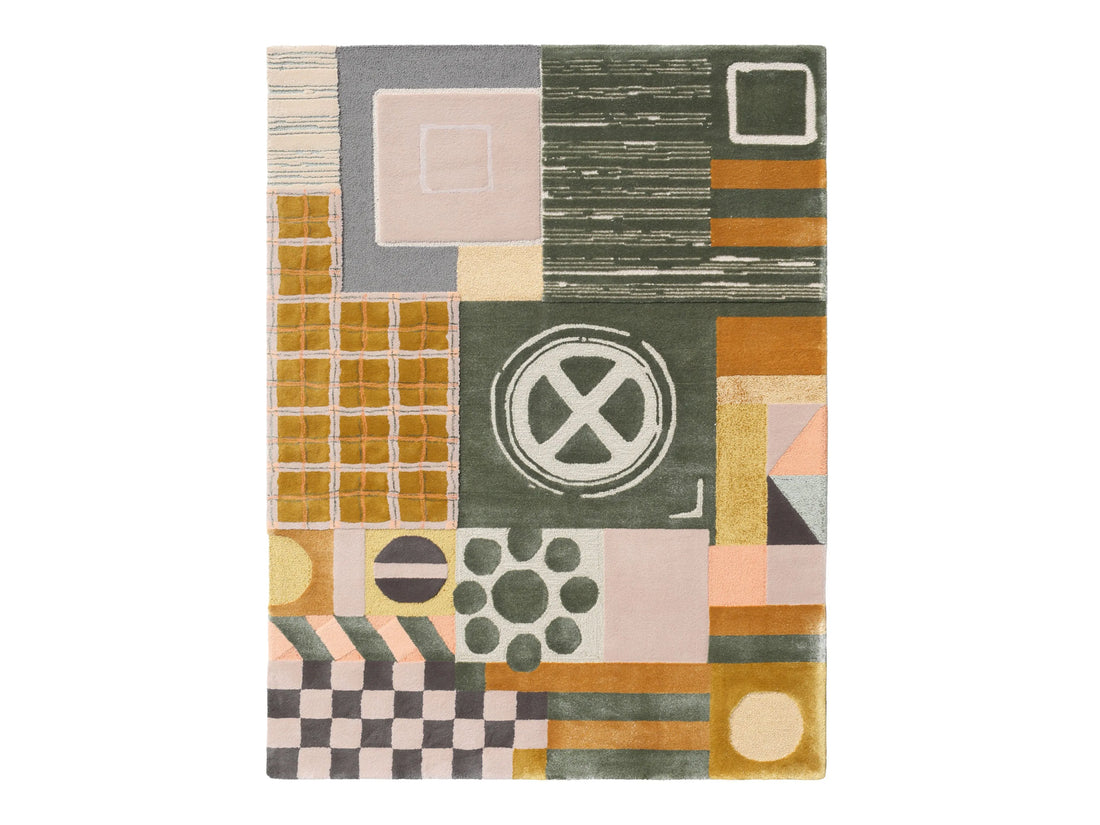
The Science Behind Color Schemes in Bespoke Interiors
Sai SandeepShare
Have you ever wondered why some rooms feel so inviting while others seem a bit off? The secret often lies in the colors used. In this blog, we’re diving into the fascinating science behind color schemes and how they can transform bespoke interiors. We’ll break down the basics of color theory, explore the psychology of color, and share practical tips on choosing the perfect palette for your custom space—all in a friendly, conversational style.
Understanding the Basics of Color Theory
The Color Wheel Explained
Imagine a circle filled with vibrant colors—that’s your color wheel. It’s a simple yet powerful tool that helps us understand how colors relate to one another. The wheel is divided into:
-
Primary Colors: Red, blue, and yellow. These are the foundation and cannot be created by mixing other colors.
-
Secondary Colors: Created by mixing two primary colors, such as green (blue + yellow), orange (red + yellow), and purple (red + blue).
-
Tertiary Colors: These come from mixing a primary color with a secondary color, resulting in hues like red-orange or blue-green.
Knowing these groups helps you choose colors that work well together, whether you’re aiming for a bold look or something more subdued.
Warm vs. Cool Colors
Colors are often grouped into warm and cool categories. Warm colors like reds, oranges, and yellows create a cozy, energetic vibe. They’re perfect for spaces where you want to encourage conversation or a sense of warmth. On the other hand, cool colors like blues, greens, and purples tend to evoke calmness and relaxation, making them great choices for bedrooms or quiet living areas.
The Role of Neutrals
Neutrals such as white, black, gray, and beige might seem simple, but they play a crucial role in balancing a room. They can serve as a backdrop that allows your vibrant hues to pop, or they can tone down a space that feels too busy. Think of neutrals as the stage upon which your bespoke pieces can truly shine.
The Psychology of Color in Interiors
Emotional and Psychological Impact
Colors aren’t just pretty—they have a big impact on our emotions. For example:
-
Blue is known for its calming effect and is often used to create a peaceful atmosphere.
-
Red can energize a space and stimulate conversation, although too much might feel overwhelming.
-
Green brings a sense of balance and renewal, perfect for spaces meant to feel fresh and rejuvenating.
Cultural and Contextual Influences
Our experiences and cultural backgrounds also shape how we perceive colors. A color that is considered lucky in one culture might be viewed differently in another. This means that when designing bespoke interiors, it’s important to consider not only current trends but also your personal history and cultural influences.
Scientific Insights
Research in color psychology shows that our surroundings can affect everything from our mood to our productivity. Designers use these findings to craft spaces that help us feel relaxed, inspired, or even more energetic—depending on our needs. By understanding these principles, you can choose a color scheme that not only looks good but also feels right for your lifestyle.
Bespoke Interiors: Customizing Color Schemes
What Makes Bespoke Design Unique?
Bespoke interiors are all about personalization. When you opt for custom design, every detail—including your color scheme—is tailored specifically for you. Instead of choosing from a fixed palette, you have the freedom to experiment with colors that truly reflect your personality and taste.
Personal Storytelling Through Color
Your home is a reflection of who you are. Whether it’s a deep blue that reminds you of the ocean or a vibrant red that symbolizes passion and energy, your color choices can tell a personal story. Bespoke decor allows you to weave your memories and experiences into every corner of your space.
Balancing Trends and Timelessness
While it’s fun to incorporate current color trends, you also want your home to feel timeless. A balanced approach might involve mixing trendy accents with classic, enduring hues. This way, your space remains fresh without feeling dated as trends come and go.
The Science Behind Color Combinations
Creating Harmony and Contrast
A well-thought-out color scheme isn’t just about picking your favorite colors—it’s about creating harmony. Here are some common techniques:
-
Complementary Schemes: Pair colors that sit opposite each other on the color wheel, like blue and orange. This creates a vibrant look with natural contrast.
-
Analogous Schemes: Choose colors that sit next to each other, such as blue, blue-green, and green, for a more harmonious and soothing palette.
-
Triadic Schemes: Use three colors that are evenly spaced on the color wheel to achieve a balanced, dynamic look.
Rules and Ratios
One popular guideline is the 60-30-10 rule. Use one color for 60% of the space (walls, large furniture), a secondary color for 30% (upholstery, rugs), and an accent color for the remaining 10% (accessories, decor items). This helps maintain balance while adding visual interest.
Lighting and Perception
Lighting plays a huge role in how we perceive color. Natural light can make colors appear more vibrant, while artificial light might soften or alter hues. When planning your color scheme, consider how different lighting conditions will affect your space throughout the day.
Impact on Space Perception
The right color scheme can change the way a room feels:
-
Light Colors: Can make a small room feel larger and more open.
-
Dark Colors: Add a sense of intimacy and warmth, which can be perfect for cozy, private spaces.
-
Bold Colors: Create focal points and can be used to highlight specific areas or features in your home.
Practical Tips for Choosing Your Perfect Color Scheme
Start with Inspiration
Begin by creating a mood board. Gather images from nature, art, or even your favorite travel destinations. This visual collage can help you pinpoint the colors that resonate with you.
Test Before You Commit
Before painting an entire room, try out sample swatches on your walls. Look at them under different lighting conditions to see how they change throughout the day. This small step can save you time and ensure you’re happy with your choice.
Consult with Experts
Don’t hesitate to work with an interior designer or color specialist. Experts at Artvikta can guide you through the process, offering insights based on both scientific principles and years of design experience.
Utilize Digital Tools
There are many online tools and apps that allow you to experiment with different color palettes virtually. These tools can help you visualize how your chosen scheme will look in your space before making any permanent decisions.
Merging Personal Style with Scientific Principles
Personal Expression Meets Proven Science
While science provides a solid foundation, your personal taste is what makes your space unique. Find a balance by choosing colors that make you feel good while also following design principles that ensure harmony and balance.
Finding Your Signature Palette
Take the time to explore different combinations until you find one that feels just right. Your signature palette should reflect your personality, be it bold and dynamic or soft and serene, and work well within the context of your home.
Evolving with Your Space
Remember, your style can evolve over time. It’s perfectly okay to refresh your color scheme as your tastes change or as new trends emerge. Your home is a living space that grows with you.
Technology and Tools in Designing Color Schemes
Digital Color Tools
Explore online color scheme generators and design apps that can help you visualize your ideas. These digital tools are especially handy when you’re trying to see how different shades interact with each other in a virtual setting.
Virtual Design Consultations
Many design firms, including Artvikta, now offer virtual consultations. This means you can get personalized advice on your color scheme from the comfort of your own home, with experts guiding you through every step of the process.
Integration with Modern Design Software
Modern design software can simulate various lighting, textures, and spatial arrangements, helping you see how your chosen palette will work in real life. This technology ensures that the final outcome is both beautiful and functional.
Conclusion
Color isn’t just a visual element—it’s a powerful tool that influences mood, behavior, and overall well-being. By understanding the science behind color schemes and applying it to bespoke interiors, you can create a space that is both uniquely personal and scientifically balanced.
At Artvikta, we believe that every home should tell a story, and the right colors are key to that narrative. Whether you’re just starting your design journey or looking to refresh your current space, remember that your color choices can make all the difference. Embrace the science, trust your instincts, and create a home that feels like it was made just for you.
Ready to explore the possibilities? Connect with us at Artvikta for personalized design advice, and let’s bring your dream space to life—one color at a time.
